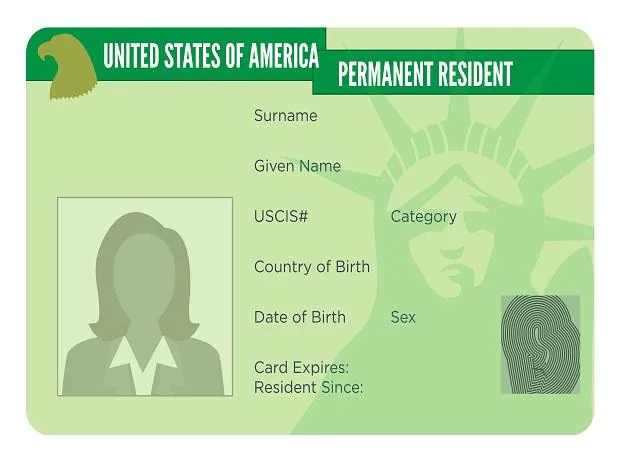A “green card” is the most common word used to describe an individual’s immigration status after being given permission to permanently live in the United States.

Table of Contents
A Step-by-Step Guide to Obtaining a Green Card in the United States.
Discover what a green card is, who it is for, the qualifications, and the procedure for acquiring permanent residency in the United States.
What exactly is a Green Card?
When referring to the immigration status of a person given permanent authorization to stay in the United States, the phrase “green card” is most often used. Employment, marriage, family connections, refugee status, and other factors may all help you gain permanent residency, or a green card, in the United States.
Although there are various ways to receive a green card, some need approval from the US Department of Labor. In general, a business must get this certification to demonstrate that there are not enough American employees who are competent, willing, qualified, and accessible in the geographic region where the immigrant would be employed, and that no American workers will be replaced by foreign workers.
A green card allows a person to live and work in the United States, as well as seek for citizenship after a specific number of years of residence. Every year, a Green Card Lottery programme (Diversity Immigrant Visa Program) is held to provide prospective immigrants with the chance to attain the status of permanent legal resident in the United States.
The programme operates every year and grants 50,000 green cards to candidates chosen at random in a lottery method. Citizens of countries with a high rate of immigration to the United States, on the other hand, are ineligible for the Green Card Lottery. The list changes each year, but a current list of qualifying nations may be accessed on the USCIS website.
The Requirements for Obtaining a Green Card
The first stage in permitting a company to engage a foreign worker on a permanent basis in the United States is to get a labour certification from the Department of Labor. The Department of Labor must then certify to USCIS that there are no U.S. employees who are able, willing, qualified, or available to do the job, and that the employment will not have an unfavourable effect on the pay and working conditions of similarly employed U.S. workers.
An employer must submit an Application for Permanent Employment Certification to ETA (ETA Form 9089). The application includes a detailed description of the job, tasks, educational requirements, and any unique qualities that the employee must have in order to accomplish the job, as well as a declaration of the potential immigrant’s credentials. Some candidates, however, are not needed to get such certification before being eligible for the Green Card Lottery.
Individuals seeking a green card via employment may apply while overseas after being issued an immigrant visa number, which is structured based on preferences.
Individuals with exceptional ability, prominent academics, professors and researchers, and worldwide CEOs are given first priority.
The second category is for professionals with advanced degrees or extraordinary skill.
The third choice is for skilled and professional personnel, or individuals with less than two years of relevant experience.
The fourth category is for those in unique situations, as well as some religious personnel.
Finally, the fifth priority is for immigrant investors who must spend a certain amount of money in an enterprise that produces at least 10 new employment in the United States or other legal permanent residents and immigrants.
These are all possible paths to acquiring a green card, but none are guaranteed. More information on the forms for each choice and specific case should be obtained from an attorney, but they are the fundamentals.
Popular forms of work visas in the United States include:
Specialty Occupation Worker H-1B Visa (skilled worker)
H-2B Visa – Non-agricultural Temporary Worker
Temporary Agricultural Worker (H-2A) Visa
Intra-company Transferee L-1 Visa
B-1 Visa – Visitors on business
J-1 Visa – Program for Exchange Visitors
